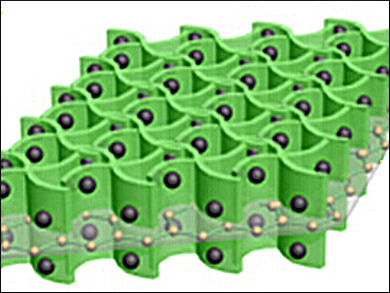Lithium-ion batteries, still the predominant power source in portable electronic devices, require ever more abundant, low-cost, and nontoxic materials to meet the world’s energy demands. Potentially attractive components include nickel silicate (NiSiO) nanostructures, because of their stability and unique structure, Ni nanoparticles (NiNPs), because they can enhance the electrical contact of the electrodes and the endurance at high current densities, and graphene, because of its high surface area, high electrical conductivity, and high thermal/chemical stability.
Yan Xing, Northeast Normal University, Changchun, China, and colleagues have developed a ternary nanostructure with reduced graphene oxide (rGO) sandwiched between two layers of well-dispersed NiNPs anchored on ultrathin NiSiO nanosheets. These sandwich structures exhibited enhanced electrochemical properties, i.e., reversible capacity, cycling performance, and rate capability compared with simple NiSiO and rGO/NiSiO materials.
The synergistic effect of the graphene matrix with the electrochemically inert NiNPs has great potential for the future design and fabrication of advanced anode materials.
- Sandwich-Structured Graphene-Nickel Silicate-Nickel Ternary Composites as Superior Anode Materials for Lithium-ion Batteries,
Renxi Jin, Yang Yang, Yunfeng Li, Xianchun Liu, Yan Xing, Shuyan Song, Zhan Shi,
Chem. Eur. J. 2015.
DOI: 10.1002/chem.201500249




